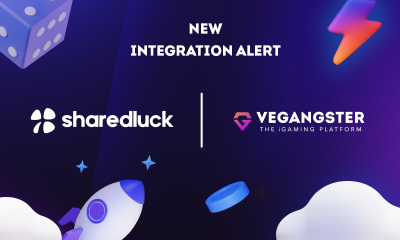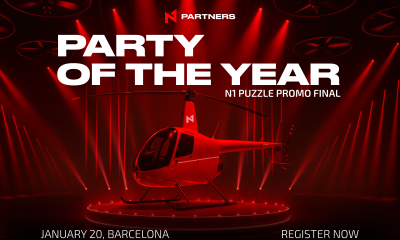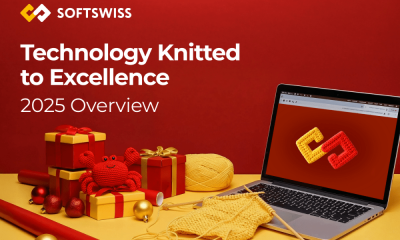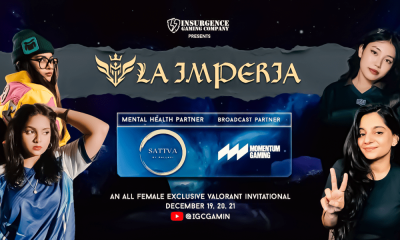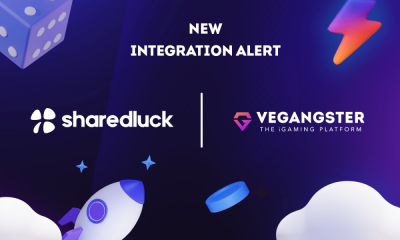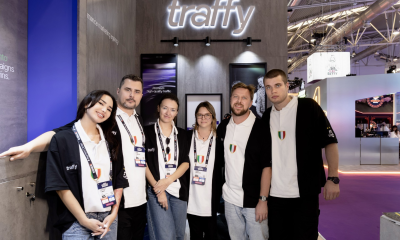Interviews
Crush Test for iGaming Projects: SOFTSWISS on Why High Load Performance Defines Operator Success
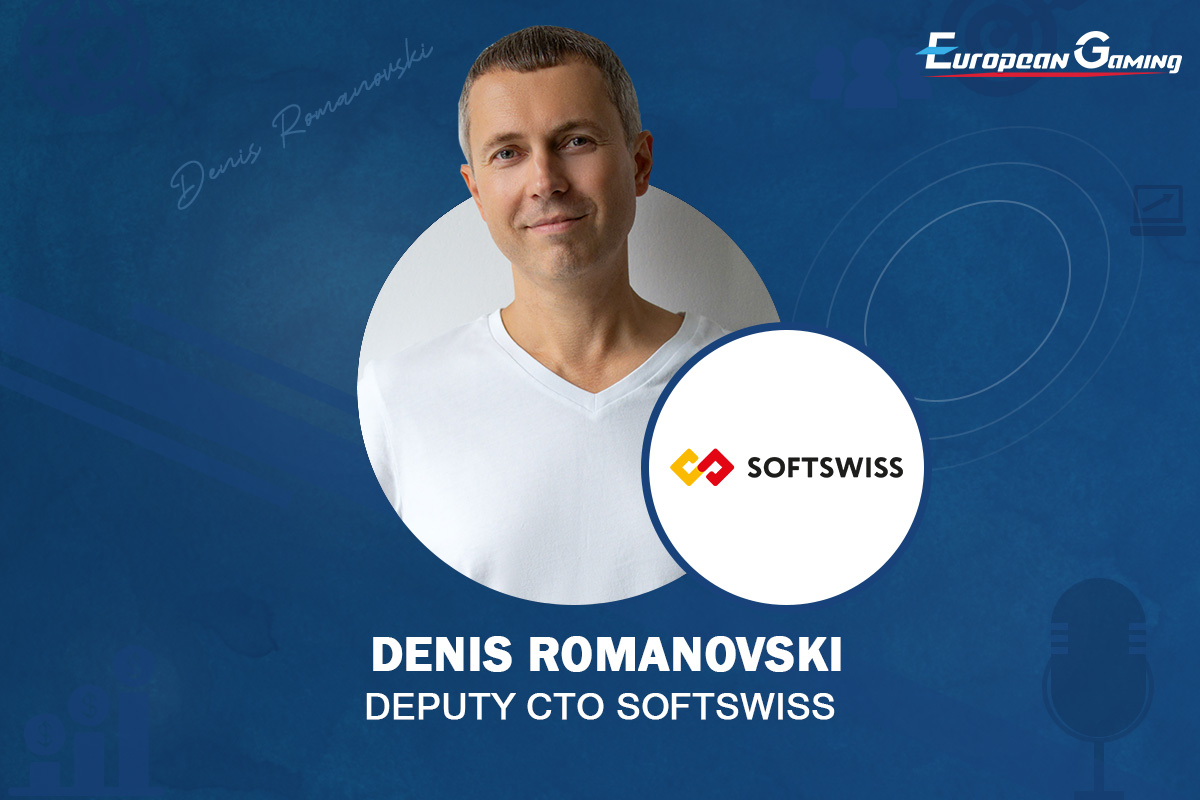
For iGaming operators, success depends not only on content and marketing but on their ability to stay online when it matters most. We spoke with a SOFTSWISS expert, Deputy CTO Denis Romanovski, to understand what’s really at stake during high load events, what mistakes others make, and what architectural decisions allow platforms like the SOFTSWISS Game Aggregator to consistently deliver 99.999% uptime – even at peak moments.
When a platform fails under high load, what are the main negative consequences for operators?The fallout hits three fronts at once. First of all, you lose revenue. Every failed bet is a direct GGR gone. In a one-minute outage during peak hours, you could lose tens of thousands of euros before you even spot the issue. Second, frustrated players flood the support team with refund claims and bad reviews. Most of them switch to your competitor. Getting those players back costs far more than keeping them happy in the first place. And third, in the scramble, tech teams try to spin up extra cloud capacity at premium rates or engage pricey third-party consultants. Those crisis-mode costs often hit the usual infrastructure budget for weeks afterwards.
So in short, downtime isn’t just an IT problem – it’s a full-blown business crisis that affects finance, marketing, and customer experience.
How does SOFTSWISS prevent those failures? Which patterns are most effective for operating without breaks?
Our resilience comes from layering proven patterns. We run Kubernetes in multiple regions – Europe, Latin America, and South Africa – so player connections go to the nearest point of presence. Databases replicate asynchronously, enabling instant failover if one zone degrades.
We develop containerised microservices, which means that some of our features and tools run in isolated pods. Rolling updates and canary deployments let us push fixes to a tiny slice of traffic first; if any metric goes beyond the threshold, Kubernetes automatically rolls back.
Static assets and game binaries are cached on regional Content Delivery Networks to reduce the load on central servers. Players receive data from the closest edge node with round-trip times of under 100 milliseconds, even on 3G connections. We also have an efficient system for DDoS Defence. Our stable partnership with Cloudflare provides multi-terabit scrubbing. Malicious traffic is cleanly filtered at the network edge, leaving genuine players uninterrupted.
But one more piece is just as crucial as technology: the team behind it. You can invest in the cutting-edge hardware and build the best architecture, but if engineers lack experience working under pressure, reaction times slow down, and players notice.
SOFTSWISS brings together experienced SREs, database experts, and network architects with deep knowledge of real-world stress situations. This means we don’t just detect issues quickly – we fix them before operators lose trust.
Together, these layers of design and expertise ensure that, no matter what stress tests occur, our platform consistently delivers on its 99.999% uptime promise.
From an operator’s standpoint, what scenarios trigger the greatest anxiety during traffic surges – flash promotions, major sporting events, or something else?
Operators worry most about the unknown spikes. Scheduled events are planned for, like a Champions League kickoff or a midnight bonus reset. But unexpected surges, for example, when a progressive jackpot hits 10 million euros or a social-media post goes viral, can triple traffic in hours, if not minutes. These are the moments when lobbies freeze and players see spinning wheels that never load.
The fear is not theoretical. I think every operator is familiar with this feeling when you see the queue at the support service filling up with complaints. Every frozen second undermines the player trust that operators spent months building. That’s why they need a reliable tech partner with proven protocols for handling traffic spikes and a track record of keeping the software running without downtime.
Can you walk us through a real “crash test” you’ve seen: what operators see on their dashboards when systems go down?
I can describe a typical scenario that happens in one form or another quite often. Let’s say it’s a Saturday free spins sale on a new slot, paired with double loyalty points. Traffic can jump from 5,000 to 15,000 concurrent users in ten minutes. On the dashboard, CPU usage rises above 90 per cent, Redis cache miss latency jumps from 5ms to over 50ms, and the error rate exceeds 5 per cent. Players see “502 Bad Gateway” errors or simply blank game tiles.
Behind the scenes, operators struggle to issue refunds, while marketing watches their promotional budget turn into failed KPIs. That kind of slippery slope, where one service slowdown affects another, can turn a simple spike into a full-scale outage.
Another case we had at SOFTSWISS involved a live stream event run by one of our operators. They hadn’t properly forecasted the traffic surge, and the load hit fast. We saw system strain building within minutes – API response times climbing, queues backing up. Our team had to act quickly to rebalance and optimise the infrastructure on the fly by adding resources and redistributing load.
Are there any general recommendations or lifehacks operators can use to ensure the stability of their platforms under high load?
Sure – stability is not just about servers and code; it starts with the way people work together and the processes they follow. Regardless of the platform, there are some crucial questions and data points operators should agree on with their provider’s technical account manager before any big launch.
First, operators need to track traffic dynamics closely – how many players arrive, how many register, and how many stay in play. They should share these forecasts with their provider and flag any risk of actual traffic far exceeding expectations.
The provider, in turn, will map its load models against planned promotions or events. That way, capacity gets reserved in advance instead of scrambling when reality outpaces the plan. At SOFTSWISS, for example, we continuously monitor load on our core components and build in redundancy to absorb traffic spikes.
Operators also need clarity on which SLAs guarantee that extra capacity or failover will be authorised the moment it’s needed. When seconds count, no one should be hunting for the required approvals.
Finally, a new brand or promo campaign must be introduced gradually. Operators can start with low-traffic markets or off-peak windows, verify performance in real‐world conditions, and only then ramp up traffic. This approach will let them avoid unpleasant surprises when the big day arrives.
Nevertheless, high-load incidents do occur. If this happens, blaming is the last thing to think about. However, the tech partner must provide a copy of its post-mortem playbook with root cause analysis, updated runbooks, and clear remediation steps.
Following these checkpoints, operators can trust their tech partner to handle any traffic surge. Potential failures that once threatened to crash the system become routine operations, no matter how intense the load.
The post Crush Test for iGaming Projects: SOFTSWISS on Why High Load Performance Defines Operator Success appeared first on European Gaming Industry News.
Black Cow Technology
Inside Black Cow’s Decision To Go All In On Multiplayer

Reading Time: 3 minutes
Black Cow Technology Founder and CEO, Max Francis, on why the company has shifted focus from software development to game development, and why he believes multiplayer is the future of online gambling entertainment
Black Cow has just announced its transition into a multiplayer content provider. What made you refocus the business in such a way?
We truly believe that multiplayer is the future of online gambling entertainment, and with our own technology capable of building next-gen multiplayer experiences, we wanted to transition into a content-led business and release some innovative games of our own. Our Multiplayer RGS is especially powerful, allowing operators and suppliers to bring multiplayer gameplay to any game format, even including non-gambling events. Black Cow’s robust, reliable and highly flexible technology is already used by some of the biggest organisations in the industry, including the likes of DraftKings and Light & Wonder. The shift into creating our own multiplayer content enables us to build on our successful Remote Game Server (RGS) and Jackpot Server technology to create first-of-its kind games offering unique player experiences via our Multiplayer RGS platform.
Tell us more about your Multiplayer RGS and its capabilities. What sets it apart from similar solutions in the market?
Our Multiplayer RGS has been several years in the making and is already live with Light & Wonder. Our Multiplayer RGS can be used to create multiplayer experiences across anything from slots and table games to crash, plinko, lottery, live dealer and bingo. Games can be player-cooperative or player versus player. The system’s capabilities are really only limited by the imagination of the people using it, and that’s why we’re so excited to be moving into the realm of game development so that we can push its limits to disrupt online casino lobbies with Black Cow content.
Taking a business in a new direction is a significant undertaking, not without its risks. How have you approached this transition?
It was clear to me that we had the technology to create multiplayer content, but not necessarily the experience to date, and that’s why we’ve been making strategic hires. This year we have promoted Paul Jefferson to the role of Chief Technical Officer and we have welcomed two more big-hitters to the business – Ernie Lafky as Chief Product Officer and Shelley Hannah as Chief Operations Officer. Ernie is taking the lead when it comes to what our games will look like and how we combine key elements like multiplayer, gamification and social interaction. Shelley is managing the operational aspects of our transition to a hosted product-first model. In terms of mitigating the risk, it comes down to the deep rooted confidence we have in our technology and our fantastic team, plus our belief that players are seeking social multiplayer entertainment.
Why do you have such a firm belief that multiplayer content is the future? And to what extent will it dominate online casino game lobbies?
It’s not the future, it’s the now. You just have to look at the experiences offered by other online entertainment options to see that they are becoming increasingly multiplayer and social. From dating to streaming, social media to mobile gaming, consumers want to engage with products and experiences that can be enjoyed with others. But online casino and sports betting sit at odds with this as they have been, and remain, mostly solitary experiences. We have started to see a bit of a shift away from this, first with live casino and then the rise of the crash game format. But this is just the start of what multiplayer online gambling entertainment can look like, and at Black Cow we have the vision, people and technology to really spearhead the multiplayer movement and be a true leader in the space.
As for the degree to which multiplayer content will dominate online casino and sportsbook lobbies, I think it has the potential to be significant but there will always be players that want to engage with more traditional games, products and experiences, so it will be down to each operator as to how they promote multiplayer games. Naturally, this approach will differ from brand to brand based on their specific player-base.
What can we expect from Black Cow now that your transition into a multiplayer game developer is well underway?
Paul, Ernie, Shelley and the team are working hard on our initial product roadmap, including the first run of games that will leave our production line. This is a really exciting moment for me and the whole team, as it will bring our vision to life and set the blueprint for what our multiplayer games will look like moving forward. It goes without saying that our multiplayer games will embody the core values we have built Black Cow on – reliability, flexibility and robustness. This is a big change for Black Cow, and change does bring challenges. But we are all aligned and excited by the new direction. Success is never guaranteed, but we are walking into the next chapter of the Black Cow story confident that it will be our best yet.
The post Inside Black Cow’s Decision To Go All In On Multiplayer appeared first on European Gaming Industry News.
Interviews
Scaling With Purpose: RedCore’s Tech Vision Explained

Reading Time: 7 minutes
At SiGMA Central Europe in Rome, European Gaming Media sat down with Yevhenii Yankovyi, Vice President of Technology and Deputy CTO at RedCore, for a deep look into what truly powers RedCore’s large-scale engineering operations.
RedCore is known for innovating at enterprise level, yet moving with the agility of a fast-growing tech company. In this conversation, Yevhenii breaks down how the organization manages that balance: how engineering teams maintain both speed and reliability, how automation empowers creativity, and why culture must remain a daily practice rather than a one-time achievement.
Can you introduce yourself and RedCore’s approach to engineering at scale?
Sure. My name is Yevhenii, I’m the Vice President of Technology at RedCore and Deputy CTO. RedCore is a large company with many products and projects, so everything we do operates at a significant scale. And when people hear “enterprise-level engineering,” the usual assumption is that scale automatically means slowness: slow decision-making, slow implementation, slow testing, slow time to market.
That’s the mindset we challenge. We don’t believe speed and stability are opposites. In our experience, at this level of complexity, the two actually reinforce each other. When you build the right processes, the right technical foundations, and the right organizational structure, speed becomes a natural result of stability – not something that contradicts it.
We plan for scaling from day one. For us, that’s a fundamental requirement. We build products with the expectation that they will grow, and growth means scale. So we design with that in mind from the very first line of architecture.
But that doesn’t mean disappearing for six or ten months to design the “perfect” system. That’s the common mistake people make when they hear “design for scale.” Our approach is different: we keep the long-term vision in mind, but we move fast, iterate, and make sure the product can evolve without slowing the team down. Stability and speed working together – that’s the engineering culture we build at RedCore.
How does RedCore balance speed and stability in daily engineering?
I will explain this with a simple metaphor: think about a car. Everyone talks about acceleration and top speed, but none of that matters if you can’t take a corner. Speed alone is not the winning formula – you also need control.
That’s exactly how we look at engineering at RedCore. We want to accelerate, make decisions quickly, and develop fast. But we also need the ability to slow down at the right moment, change direction, and stay agile. Balancing speed with stability is the only way to move at scale.
There are many layers to this – it’s a topic I could talk about for days – but in a nutshell:
at a big scale, you must have strong standards, clear policies, and a high level of automation. We rely heavily on automation: infrastructure as code, CI/CD pipelines, automated testing, and all the tools that remove repetitive, routine work from engineers’ daily lives. When the routine disappears, people can focus on what humans actually do best: creativity, problem-solving, and innovation.
However, automation doesn’t build the software for you. It creates a safety net. It catches mistakes, guards quality, and supports engineers when their creativity pushes boundaries. In other words: tools give freedom, and also protect that freedom.
And of course, this includes AI and many other modern tools. We use whatever helps us keep the balance: give people space to think, create, and experiment, while ensuring the system stays stable, predictable, and high-quality.
How does RedCore’s management keep teams aligned yet fast?
First of all, we provide clear goals. As I mentioned earlier, we always design for scale from day zero – but you can only do that if you know exactly what you’re building, for whom, and why. We have a very strong business team that understands the market and what needs to be delivered. The technology team works side by side with them, reinforcing them.
Once the goals are clear, we begin small. If you try to build a huge system from the beginning and get it wrong, you create a nightmare: something no one can support, change, or grow. Complexity grows exponentially, and humans don’t think exponentially; we think linearly. That’s where companies often get lost.
So we avoid that by validating early and validating often. We start with small steps, keep a close eye on every direction we take, and confirm that what we’re building is truly needed by the market. When we see that the direction is right, then we scale – and by that point, the foundation is already in place. It’s like preparing a launchpad so that when the time comes, the team can accelerate immediately.
We build block by block and work in iterations. We take a small team – one, two, maybe three people – and let them experiment for a week. We test the idea fast, get quick feedback, and bring it to the business side: “Do you like it?” If the answer is yes, then we continue, still following all the proper engineering practices before anything goes into production.
This constant loop between business and technology keeps everyone aligned. We give feedback, we receive feedback, and we move together. That’s how we stay both fast and coordinated, always ready to scale when the direction is confirmed.
How does automation empower engineers without slowing them down?
When we talk about automation, we’re really talking about optimization at scale. It doesn’t make sense to over-engineer small things, but at the scale we operate, the cost efficiency and speed gains are enormous. And people often assume that big systems and automation automatically slow everything down. For us, it’s the opposite.
The tools we introduce are not meant to tie engineers’ hands with bureaucracy. We don’t force strict guidelines or heavy processes that kill creativity. Our tools exist to help: to prevent mistakes, to collect feedback quickly, and to give teams the shortest possible path from idea to validation.
Here’s a simple example: we start experimenting with a small feature. We build a tiny prototype to see if the idea works. If it’s promising, the next step is testing, pipelines, deployment – all the things that normally take time. In many companies, engineers would try to do all of this manually because “building the tools will take too long.” But with us, the tools are already there. The infrastructure, the CI/CD, the automation – everything is ready to use. Our engineers are essentially customers of this internal platform that supports fast, safe delivery.
We have many different teams that have different great ideas. If one team tries something new and it works better, great – we learn from it. If another team has a different approach because of product specifics or release schedules, that’s fine too. We give freedom to the teams to work, share their experiences, and then scale.
Of course, there are non-negotiables. When it comes to security and data privacy there is zero tolerance. These are areas where strict rules are absolutely necessary. I always tell the security people: everyone should be a little afraid of you, because these things must be perfect. But outside those critical areas, we don’t impose rules that slow teams down. We experiment, gather feedback, adjust, and keep improving.
We’re constantly researching, experimenting, and customizing our automation depending on the product and the market. But when it comes to system design, we don’t reinvent the wheel. We choose globally recognized tools and industry-validated technologies. So yes, we empower engineers with automation and the right tools, built on a solid, modern foundation.
How does culture work for you – is it an achievement, or part of your routine?
Culture is a critical element in balancing speed and stability. Tools and processes matter, but culture is what truly empowers a team and keeps everything together at scale.
For us, culture starts with giving people freedom: the freedom to experiment, the freedom to make mistakes, and the freedom to challenge ideas. We don’t want engineers to be afraid of trying something new. We build a culture where mistakes are acceptable and manageable. If we try something and it doesn’t work, great – now we know better. We learn, adjust, and move on.
We encourage ideas from every level. Some of our most interesting insights come from developers who notice something while working on a small task. They can come directly to me or to the CTO and say, “I see a problem here.” It’s completely okay. A small detail in one corner of the system can become a huge issue at scale, so we listen. That’s how we avoid blind spots.
We also give teams autonomy. Small teams can make their own decisions and experiment in their own ways. If different teams want to do things differently, that’s fine – as long as they validate everything and share their findings. We want people to help each other and to understand that even top engineers have ups and downs. Even senior management makes mistakes. I constantly ask my team: “If I make a wrong decision, tell me.” It’s not about transparency as a buzzword – it’s about behavior. People observe how you respond, and they learn from that.
The biggest mistake any leader can make is demotivating people. We work with intelligent, educated, passionate professionals. They want to contribute. You just need to give them the space to do it. That’s when you see people shine and bring forward brilliant ideas.
As for the question of whether culture is an achievement or a routine – for us, it’s definitely a routine. People often talk about “building a strong engineering culture” as if it’s a success. We treat it as a routine as a process. Culture is the daily interactions between people in an organization. Those interactions change: people come and go, someone has a bad day, someone disagrees with a decision. Culture is shaped every day by how we communicate, how we argue, how we respect each other, and how we resolve differences.
Going to a colleague in the kitchen and asking, “Hey, what do you think about this?” – that’s culture. Anyone can talk to anyone, openly. And when engineers realize they can make a real impact, that they are heard, that they can influence the product — that motivates them. That’s what keeps the culture alive.
How do you balance standards with creative freedom?
The first thing is that we don’t pressure people. We set strict standards only where they are truly critical for the business. Security, data privacy, stability at scale – those areas demand clear rules. But everywhere else, we try not to push people. And when we do introduce a standard or guideline, we listen carefully to feedback. If the team tells us we made the wrong call, that’s okay – we rethink it and look for better approaches.
The second thing is that as the projects grow, the teams scale as well. Even in the design phase, we don’t start with a huge team. I prefer a small group: one key person who leads the design initiative, plus two or three contributors who constantly review, test, question, and give feedback. If three or four people align in one direction, that’s a good signal we’re on the right track. Then we take that proposal to a larger group – people who might use it or need it.. We refine it again based on their input. The idea evolves, but we don’t need to start from the beginning.
Finally, when we have a strong direction, we present it to the entire tech team. And even then – even if top management already supports the decision – it’s completely acceptable for a mid-level developer to raise concerns. Maybe they’ve seen something before, maybe they read an article, maybe they faced a similar issue. We listen, because at scale, one overlooked detail can cost millions.
So once again, balancing standards with creative freedom is about scaling the processes step by step: we start with a small group, validate in small cycles, and then scale the decision up gradually. This approach protects creativity, ensures high quality, and keeps us aligned. And combined with our culture, it makes the process both fast and safe.
The post Scaling With Purpose: RedCore’s Tech Vision Explained appeared first on European Gaming Industry News.
HIPTHER
How to Write a CV that Attracts Top Employers – Insights by Valeriia Virchenko, Head of Talent Acquisition at RedCore

Reading Time: 4 minutes
European Gaming Media joined RedCore and Valeriia Virchenko, Head of Talent Acquisition, at their SiGMA Central Europe booth in Rome to discuss a topic that resonates with every ambitious professional: how to write a CV that truly stands out to top employers.
As an accomplished recruitment leader with extensive experience across continents – from Europe to Latin America, Africa, and Asia – Valeriia brings a global perspective on what leading companies seek in candidates today. Under her leadership, RedCore’s talent acquisition strategy continues to attract and develop exceptional professionals across tech, marketing, and fintech.
Interview by Maria Emma Arnidou, HIPTHER – European Gaming Media
Valeriia, from your experience leading large-scale recruitment projects across international markets, what makes a CV truly stand out to top employers today?
First of all, thank you for the invitation. From my experience, what really makes a CV stand out is when candidates clearly show their results and impact. Top companies want evidence of what you achieved, not just a list of responsibilities. It’s important to include metrics or numbers – for example, not just “I managed a large team,” but “I led a team of 15 and increased results by 20%.” These details matter. Employers want to see how your experience directly helped solve problems or improved something within the company.

What are the most common mistakes candidates make when writing their CVs, and what advice would you give them to avoid these pitfalls?
This is a big topic, but in my opinion the most common mistake is that some CVs are simply too long. Hiring managers can only scan a CV briefly, so two pages, three at most, is enough. Writing a very long CV is a major mistake. Another point is simple but often overlooked: candidates really need to proofread their final draft. Small errors and little details matter because they show whether someone is attentive and pays attention to detail.
When reviewing applications at RedCore, what qualities or signals do you look for that show a candidate is ready to grow within a fast-paced, innovation-driven environment?
We mainly look for two things. The first is adaptability – people who can adjust quickly to change. The second is a genuine love of learning. We prefer hiring people with a growth mindset. How fast someone can learn new tools or approaches is very important for us, because our industry is extremely dynamic. If a person doesn’t like learning or isn’t open to new technologies, it becomes difficult to work together in such an environment.
On a CV, it helps a lot when candidates highlight this. If you started a new project, learned a new tool quickly, or solved a significant problem at work – mention it. These signals show us that you’re ready to grow with us.
RedCore is actively hiring specialists across various sectors – also C-level professionals. What can experienced candidates expect when joining your organization in terms of career growth and support?
We can talk about perks, benefits, high salaries – and of course we have all of that – but so does everyone. What I really want to highlight, especially for C-level candidates, is something different. If you look at our booth here at SiGMA Central Europe, you can see how big it is – because it houses the many brands : Mr. Booster, Frogo, PayPartners, and others. Each of these brands has its own C-level professionals, and these leaders grow inside our company.
What we offer C-level professionals is ownership and creative freedom: the opportunity to act like business owners. They can take a product from idea to market, understand what needs to be done, build the right sales strategy, and really drive the product forward. They get the freedom and responsibility of running a business, but in a comfortable environment and with minimal risk. You can focus purely on growth and vision.
And one more thing that’s very important for us: we always welcome C-level candidates to visit our booth at expos. We want to meet them, to get to know them, even if they are not actively looking for a new role right now. There are always opportunities, and we are always open to talent.

Finally, for those aspiring to join global companies like RedCore, what’s your number one piece of advice for crafting a CV that stands out and secures an interview?
Be very clear about your sector. If you work in fintech, iGaming, healthcare – mention it right away, because it immediately gives us an understanding of your background. These industries are not the same, and this context matters. The same goes for technical roles: if you’re a developer, list your full tech stack clearly. Which technologies, which tools – everything should be easy to find.
Structure and presentation are also important. It’s better to build your CV using a proper layout tool like Canva or Tilda, rather than leaving it as a plain Google Doc. Think of it like a user journey: recruiters and hiring managers should instantly know where to find the right information about you.
And finally, include a photo: a simple, professional portrait. Sometimes we see funny photos, and that’s not the impression you want to give when applying to a global company. You don’t need a studio shoot; even a phone photo taken against a white or grey wall is enough. People want to see who they might be working with in the future.
Thank you, Valeriia, for sharing your valuable insights on building a career-ready CV and giving us a closer look into RedCore’s approach to talent and professional growth.
RedCore is hiring – View the job openings & build your dream career with them!
Stay tuned for more exclusive interviews from SiGMA Central Europe 2025, brought to you by European Gaming Media, your trusted source for insights at the intersection of iGaming, tech, and innovation.
The post How to Write a CV that Attracts Top Employers – Insights by Valeriia Virchenko, Head of Talent Acquisition at RedCore appeared first on European Gaming Industry News.
-

 Latest News6 days ago
Latest News6 days agoVegangster Gives Operators Real-Time Jackpot Control and a New Revenue Stream with Sharedluck’s JackpotX
-

 Latest News6 days ago
Latest News6 days agoRegistration Open: N1 Puzzle Promo Show & Winner Announcement in Barcelona
-

 affiliate marketing5 days ago
affiliate marketing5 days agoSOFTSWISS 2025: 45% Game Portfolio Growth, LatAm Extensive Expansion and Flagship iGaming Trends Report
-

 Asia6 days ago
Asia6 days agoInsurgence Gaming Company Introduces La Imperia, a Community-First All-Female VALORANT Tournament
-

 Christos Zoulianitis Chief Commercial Officer at ENJOY6 days ago
Christos Zoulianitis Chief Commercial Officer at ENJOY6 days agoENJOY Gaming turns up the heat with Hotfire Diamonds 2: Hold and Win 3x5x3
-

 Latest News7 days ago
Latest News7 days agoSlotland’s Crown Jewel, Gods of Egypt, Resurrects with Enhanced Features
-

 Latest News6 days ago
Latest News6 days agoVegangster Gives Operators Real-Time Jackpot Control and a New Revenue Stream with Sharedluck’s JackpotX
-

 Latest News6 days ago
Latest News6 days agoTraffy Expands Its Global Impact in Mobile Performance Marketing




